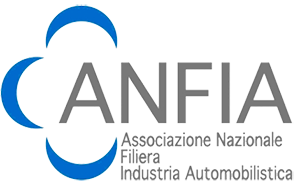Staying on the safe side – TMD Friction puts brake discs through their paces
The ECE-R90 created standards for the testing and approval of selected replacement parts that were binding throughout Europe. For safety-related components such as brakes, compromising on quality is risky – and, in the worst case, fatal. The “R90” test seal is a reliable sign of quality and ensures that both the workshop and motorist are always on the safe side.
The ECE-R90 guideline has stood for a quality feature for brake pads in the spare parts market since 1999, and is now, under the abbreviated designation “R90”, considered an integral part of everyday workshop life. Since November 2016, it has also applied to brake discs and drums for car and van models registered after this date. Following the expiry of a warranty period and the first inspection at an authorised workshop, these vehicle models are now increasingly being taken to independent workshops where, if required, they must be fitted with brake discs and drums approved in accordance with ECE-R90 – a key issue highlighted by brake specialist TMD Friction. To be able to supply the aftermarket with these products, manufacturers must verify the quality of their spare parts in drawn-out and costly tests. TMD Friction invests more than EUR 1 million annually to provide the commercial sector and workshops with the widest possible product range of certified brake discs and drums.
ECE-R90: Tested OE quality
For a spare part ultimately to receive ECE-R90 approval, significant demands are placed on the component properties and manufacturers. Key features of the R90 approval for the brake disc component are the disc crack test and the high load test. Another requirement for product certification is that braking with the replacement disc must not deviate by more than 10 per cent from the original disc. These highly complex tests that adhere to strict specifications ultimately ensure that the spare part is equivalent to the corresponding original equipment product – thereby justifying the higher costs for spare parts from premium manufacturers.
“In this complex process, which has been assessed by the Technical Service Division and approved by the Federal Motor Transport Authority (KBA), we benefit from our experience in original equipment, where we continuously develop the optimum product to meet ever-increasing market requirements,” says Vincenzo Di Caro, Senior Manager Vehicle Programme. “Thus, we are also able to make OE quality available in the independent workshop, too – and not only where it is mandatory. We test our products far beyond the legal requirements – for example, within the categories of braking power, service life and comfort of the drive. Even our brake discs for older vehicle models, which were launched on the market before the cut-off date, are in large part tested according to ECE-R90. The performance, safety and ride comfort of our products are our top priorities as one of the pioneers and leading premium manufacturers for brake technology.”
A test mark for enhanced safety
Automotive professionals can recognise the tried-and-tested, high-quality products that are approved for the replacement of the original brake disc thanks to the clearly visible test mark. This consists of a circle with the letter “E” and the identification number of the country that issued the authorisation. This is followed by the combination “90R”, as well as other letters and numbers. With quality products marked in this way, workshops and drivers can be sure that they are always on the safe side. On the one hand, installing and operating non-certified parts is not permitted for newer vehicles. And on the other hand, using them can endanger safety. “As one of the world’s leading premium manufacturers for brake technology, we advise independent workshops (where possible) not to install non-certified brake parts without a test mark – even if these are permitted for older models,” explains Vincenzo Di Caro. “Motor vehicle professionals should always use spare parts from quality manufacturers and inform their customers of the risks of supposed bargains to be found on the internet. This is because, often, especially cheap spare parts from untraceable sources do not meet the necessary quality standards, which can have serious consequences for road safety.”
And when it comes to cheap products, fakes or counterfeits, the brake pad and disc are not matched to each other. This can result in mismatched components that mean reduced braking performance and subsequently lead to excessive wear of the paired friction material. In addition, which materials were used is not documented, which means that service life, load-bearing capacity and crack resistance may be limited. Among other things, the disc’s concentricity could fall outside the permissible specifications, which the driver would notice through vibrations when braking. One additional problem: the application of insufficient, uneven or excessive corrosion protection can also affect concentricity. In a worst-case scenario, even the wheel bolt can come loose as a result. The potential consequences of untested brake parts shed real light on the roles played by quality and quality inspection in the safety of drivers and passengers. These components are also crucial for safety features such as ESP: Only if the braking system functions properly can this safety system work as intended, as the brake’s friction pairing must not deviate too much from the brake system’s designed parameters.
 TMD Friction puts brake discs through their paces.
TMD Friction puts brake discs through their paces.








